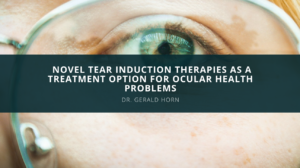There are numerous means and features to the enhancement, medication, and drug advancement measures. When a lead compound has been distinguished, at that point the possible results and connections with other excipients should likewise be investigated preclinically. The subsequent stage is to present your examination to the FDA for a Phase I preliminary, an initial step to discover the dosing and evaluate the security before you can test at portions that may be genuinely gainful. A framework set up to shield the American individuals from unintended outcomes of new uses or new revelations of medications we expect can improve our clinical armamentarium to treat illness and advance health. We need to guarantee that the drugs and enhancements we put into our bodies are protected and that they do what they state they will.
The framework begins to separate in the preliminary clinical stage, as indicated by Dr. Gerald Horn. The FDA necessitates that an item demonstrates its security and viability through clinical preliminaries on human subjects - and that cycle is costly. The cost discourages many things and enhancements from looking for FDA endorsement, which implies the American public is generally ignorant of their actual advantages. It likewise means that we're becoming acclimated to taking non-FDA endorsed nutrients and enhancements, which can leave us open to the very issues the FDA is attempting to stay away from.
So for what reason are clinical preliminaries so cost-restrictive? Dr. Gerald Horn says that the human component is the greatest thought.
The Cost Of Human Test Subjects is Exorbitant Says Dr. Gerald, Horn
We've all perused the energizing feature about malignant growth being restored in mice or medicines in pigs indicating guarantee - however then we never know about these supernatural occurrence sedates again. Dr. Gerald Horn says that we don't have a decent model for what medications will serve and mean for us outside of people themselves. The ideal approach to perceive if an enhancement will profit people is to test it on people.
"Yet, people are costly, people are occupied, and the number of members important to control a preliminary to demonstrate viability is a huge test," says Dr. Gerald Horn. On the off chance that the FDA ordered any medication demonstrated safe could be authorized and sold, their notoriety dependent on specialist and patient assurance of adequacy, even the significant expense of human subjects would be reasonable. This issue can't be disparaged.
For an immunization attempting to forestall the illness that implies 15,000 to at least 30,000 members. For a joint inflammation drug, decreasing hospitalizations by 20% would not fulfil those models in any event.
It would take 1000's of members to attempt to show adequacy in forestalling Covid. Medications like Acyclovir were affirmed as antivirals for treating shingles since when taken inside three days, it was conceivable to show the early sores didn't advance. There is no such noticeable reliable marker with other viral sicknesses like Covid, in any case.
At the point when you're discussing 1,000 individuals throughout two years, that is a great deal of cash. Regardless of whether you just paid them $1000 each throughout the whole investigation, you'd need 1,000,000 dollars. That is for volunteer pay alone! This does exclude lab preparing costs, staffing, and overhead things like lease and electric bills.
You may ask, for what reason do you need 30,000 individuals? Would you be able to lead a clinical preliminary with a more modest accomplice of patients? That question drives us to the following point.
Dr. Gerald Horn Explains the Significance of Statistical Success and P Values
At the point when you're running a clinical preliminary, you are essentially tackling for "P" where P is likelihood esteem. You need to demonstrate measurably that the advantages appeared by your item didn't happen by some coincidence or luck. The way that you show this is through benchmark groups. You measure individuals who do not take the enhancement and individuals who are taking the enhancement and look at their upgrades. The FDA requires a 95% achievement rate - or a P estimation of under 0.05% clarifies Dr. Gerald Horn.
This appears to be sufficiently straightforward. We need the items we burn-through to be powerful and safe. Be that as it may, measurably, this is a troublesome number to accomplish with more modest example sizes. On the off chance that the vast majority of individuals saw profits by the item being tried, this would, in any case, be considered "genuinely immaterial" as per the FDA - because the vast majority of is just 90% powerful.
This implies you need a more extensive pool, and when you consider a self-influenced consequence and re-testing, the numbers expected to net a 95% achievement rate begin to increase. As we've just talked about, more individuals imply more cash.
So until further notice, it's hard for minor enhancement patent holders and organizations with CPG (customer bundled merchandise) items that may have medical advantages to take their things through a genuine clinical preliminary to have the option to demonstrate and advance those advantages, says Dr. Gerald Horn. However, he trusts that will change and all the more subsidizing and perhaps a lower "P" esteem bar for customer items that are submitted to FDA preliminaries will be accessible later on dependent on the common sourcing of their fixing blend as likely altogether more secure than a run of the mill new medication to be contemplated.
CONTACT:
Caroline Hunter
Web Presence, LLC
+1 786-551-9491
SOURCE: Dr. Gerald Horn
View source form on accesswire.com:
https://www.accesswire.com/623851/Why-Do-Clinical-Trials-Cost-So-Much-Dr-Gerald-Horn-Explains





0 Kommentare